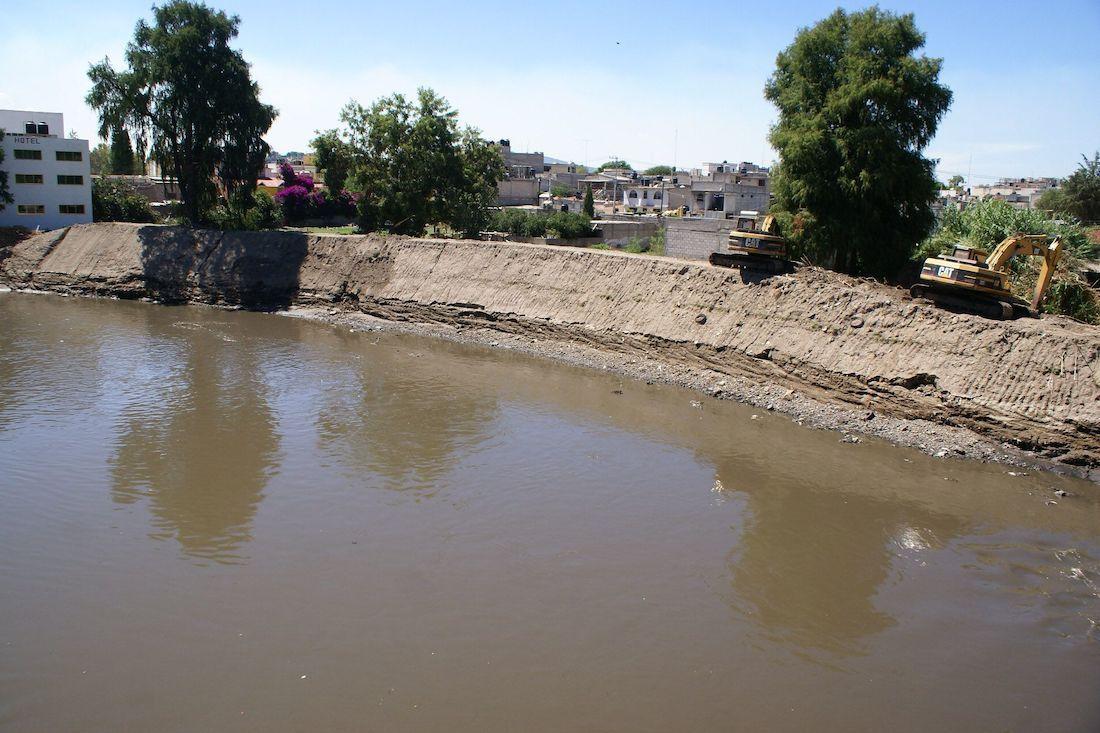With the start of works by the National Water Commission (Conagua) on the Tula River, residents and environmentalists of Hidalgo expressed concern that the consequences of the expansion of the riverbed affect 17 elementary and preparatory schools that are located on the banks, as well as municipalities surrounding the Endhó dam, such as Tepetitlán and Tlahuelilpan.
Contrary to what the authorities expected, the Conagua Water Plan has been rejected by residents, including those affected by last September's floods, who argue that the solution is limited, focusing only on increasing the river's capacity to receive wastewater and rainwater from the Valley of Mexico.
“They can't pretend to move 17 schools, but they can't leave them there either. By expanding the river, they will be able to send us all their wastewater and children, who are a highly vulnerable population, would be at permanent risk as were the patients hospitalized in the IMSS (during the September floods),” said Angélica Arellano, a member of the Environmental Awareness Network We Want to Live.
Arellano pointed out that it was incongruous that the hospital of the Mexican Social Security Institute (IMSS) had been moved to Tula, where 14 patients hospitalized for Covid-19 died after the overflowing of the river, but that no measures were being taken by the 17 schools along 19 kilometers along the riverbank.
According to information presented by Conagua at meetings with environmentalists and neighbors, the Tula Water Plan is divided into four actions: desazolve, which consists of cleaning drains; the development of a protocol for the rainy season; the creation of a network of automatic measurement stations in the basin; and the rectification of the channel and its concrete coating.
Faced with a risk approach, Dean Chahim, a doctor in Architecture and Urbanism from Princeton University, indicated that a flood like the one in 2021 cannot be guaranteed, but the expansion works only guarantee short-term security, so there are latent risks.
“One risk is that the board will fracture and we know that there is no board that has ever been built that is impossible to fracture, mainly for reasons such as poor construction or maintenance,” he said in an interview with Journalism Causa Natura.
In addition, the Conagua works do not consider municipalities close to the Endhó press, which is the dam responsible for receiving water from the drainage system of the Valley of Mexico.
“Every time you expand the riverbed you also have to climb the edges, and when you climb the edges, what you do is that maybe it will no longer flood like in September, but if (the authorities) feel more comfortable sending the water they want at a higher flow, that increases the possible damage in the event of a failure,” said the specialist.
Tula River, its tributaries and municipalities with which it borders. Image: Mexican Institute of Water Technology (IMTA).
The source problem
On May 16, Omar Darío De Lassé, director general of the Inter-institutional Liaison Coordination Unit of the Undersecretary of the Interior, attended a review of Conagua's works regarding the expansion of the Tula River.
Groups of people affected during the floods and civil organizations accompanied the tour. However, no changes were reported in the construction.
“The solution we need is upstream. 70% of what needs to be done is in Mexico City,” said Angélica Arellano regarding the expansion plans.
“Conagua's plan is to make it possible for the Tula River to accept a greater expulsion of water, it is to facilitate the expulsion of water from the Valley of Mexico —mainly the capital— instead of mitigating it, to reduce the need to expel,” said Dr. Chahim.
The possible solutions, according to the specialist, are in the regulation of water. This means not only restoring the regulators that capture water and temporarily store it until it is expelled to Tula, but also to condition new spaces for water that are closer to Mexico City, such as Lake Texcoco.
“We have to find a way to last as long as possible and for as long as possible the water in the Valley of Mexico, when at some point it has to be expelled gradually,” he added.
For those who live in Tula, as well as the environmentalists and specialists involved, the root problem will not be solved as long as Mexico City continues to be protected and those who are living the results of its expansion are left behind.



Comentarios (0)